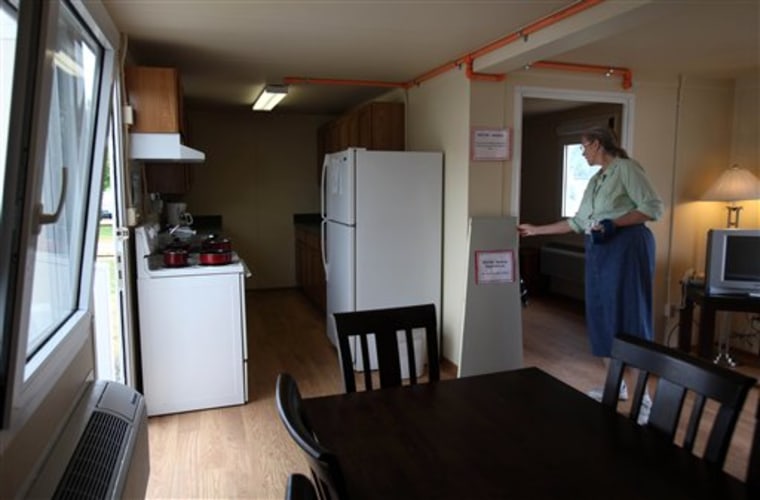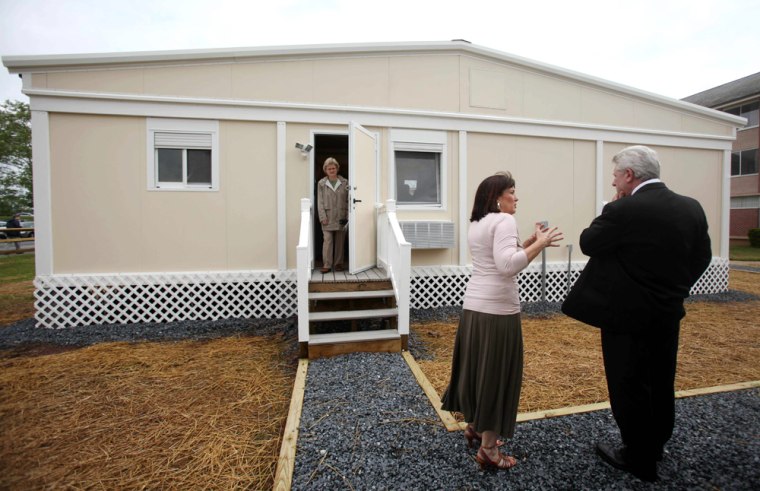They’re clean, shutterless and decorated with a rainbow of beige hues. They’re mobile homes built for future disaster victims and, so far, have safe levels of formaldehyde.
The six newly designed mobile homes were rolled out Thursday by federal officials to replace the much-criticized travel trailers used in the wake of Hurricane Katrina in 2005. Many people said living in the earlier models made them sick.
The mobile homes — including one travel trailer — were built as part of a program to develop new disaster housing solutions for the Federal Emergency Management Agency.
After Katrina, 1 million people lost their homes in Louisiana and Mississippi. FEMA sent thousands of mobile homes into the region only to learn later of high levels of formaldehyde, a chemical used in the glue for building materials that can lead to breathing problems and is also believed to cause cancer.
Residents of FEMA-issued trailers reported frequent headaches, nosebleeds and other ailments.
$45,000 to $75,000 each
The new models — which range in price from $45,000 to $75,000 — were toured by federal officials in Emmitsburg, Md. The trailers have been tested and meet FEMA standards for safe formaldehyde levels.
Students at the National Emergency Training Center in Emmitsburg will live in the units and test them for the next six to 12 months, said Jack Schuback, the FEMA official who is overseeing the project.
One thing they will watch is whether formaldehyde levels increase over time. Schuback said cooking and smoking can sometimes increase the level of formaldehyde in the air.
There is no industry standard for the amount of formaldehyde allowed in travel trailers. The government sets standards for indoor air quality for materials used to build mobile homes, but not for travel trailers.
Government tests in 2007 found an average of 77 parts formaldehyde per billion parts of air in FEMA trailers issued after the 2005 hurricanes. FEMA’s standard for the new trailers is 16 parts formaldehyde or less per billion parts of air.
Getting these units built without using much formaldehyde was one of the challenges, Schuback said.
Sheep wool used in one
One of the prototypes — the D&D Hybrid Park Model — is two bedrooms, one bathroom with walls insulated with 100 percent sheep wool. The wool absorbs the formaldehyde, said D&D chief executive officer Bill Hanblin.
The travel trailer prototype — made by Texas-based Frontier RV — is the first to have a device that circulates fresh outside air into the trailer, said Ryan Buras, a housing program specialist at FEMA. This one-bedroom trailer is also handicap-accessible with a bathroom three times larger than the typical travel trailer bathroom.

The other four units are made by Arkel International LLC of Baton Rouge, La., Heston Group of New Orleans, Lexington Homes Inc., of Lexington, Miss., and TL Industries of Elkhart, Ind.
If a major hurricane or flood left people homeless — as happened after Katrina — FEMA could order units similar to those being tested, Schuback said.
The government’s disaster housing strategy — which was adopted during the Bush administration — says disaster victims can be housed in trailers only as a last resort, even though Bush officials promised to never use them again. The strategy says that if mobile homes are used, they must meet FEMA’s new standard and disaster victims can use them no longer than six months.
By FEMA’s count, 2,570 trailers and mobile homes are still being used in Louisiana and 1,500 in Mississippi to house victims of hurricanes Katrina and Rita.
